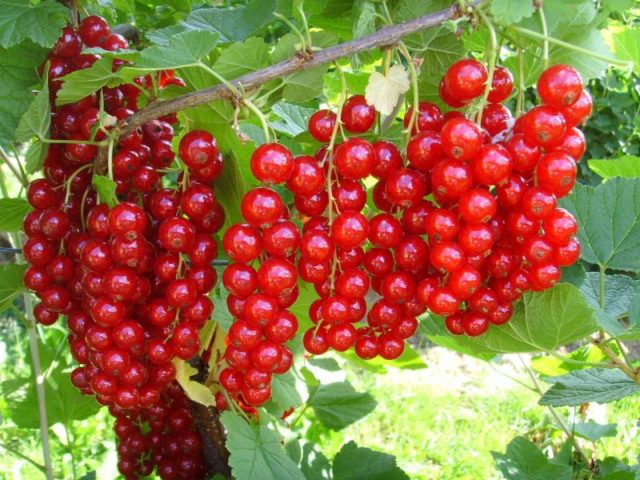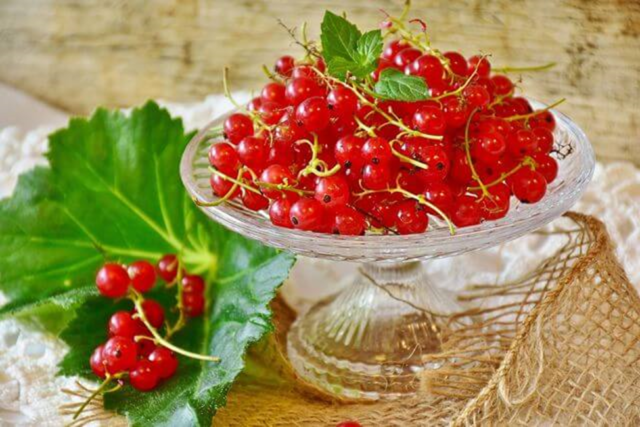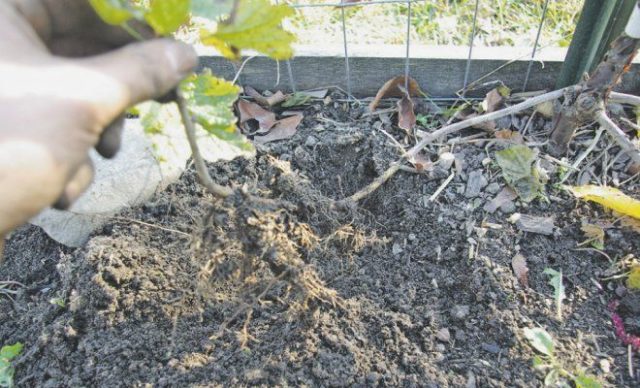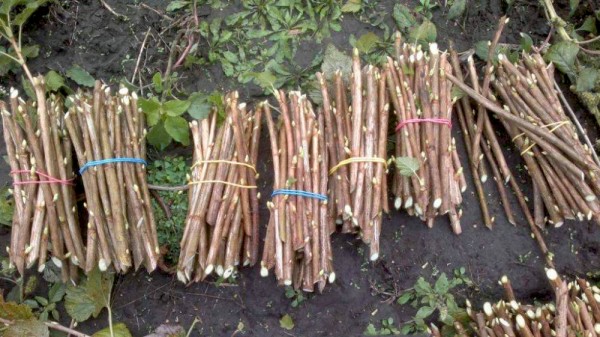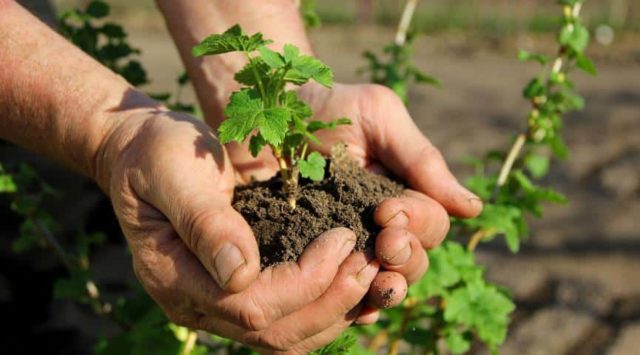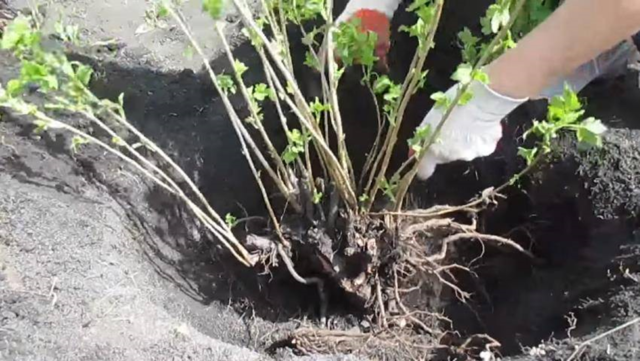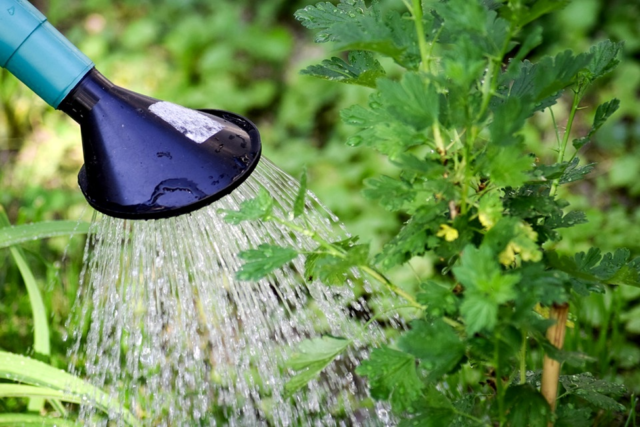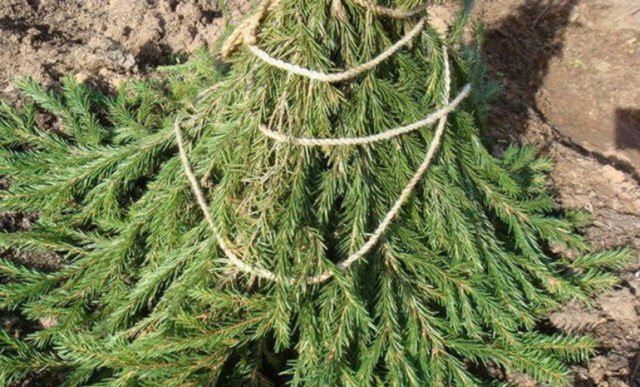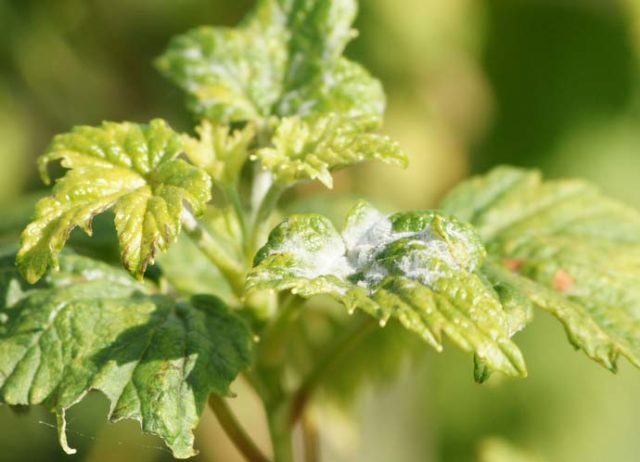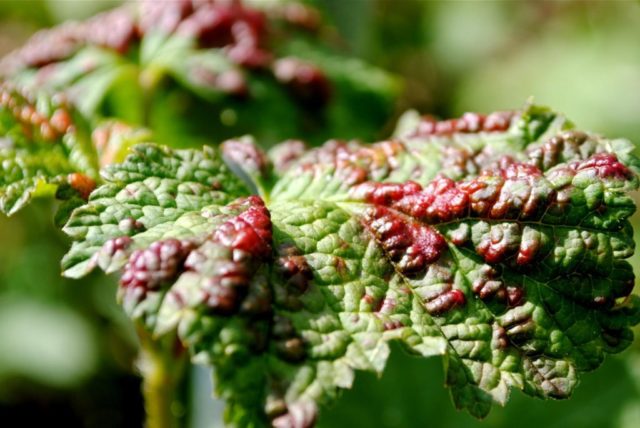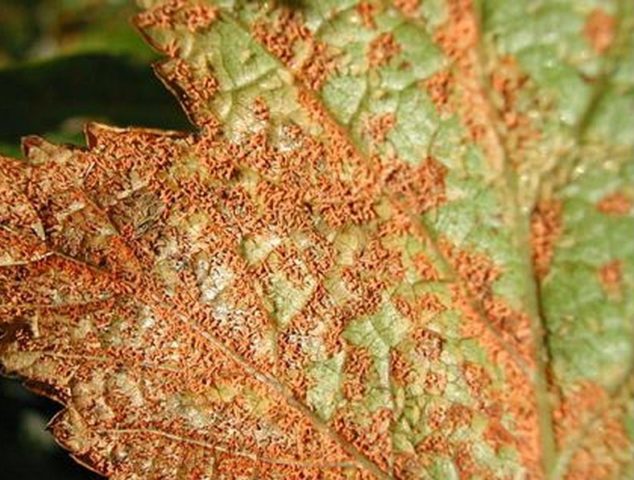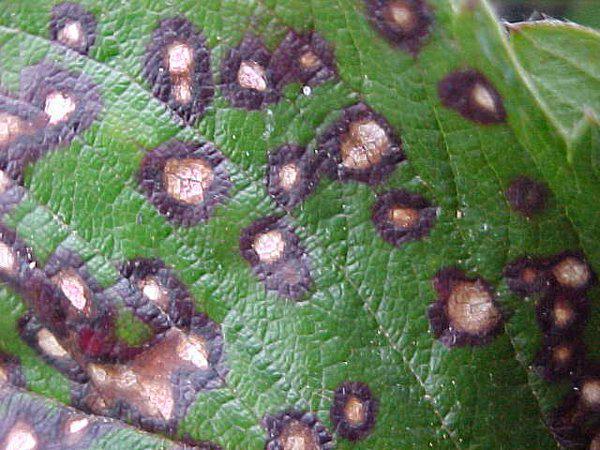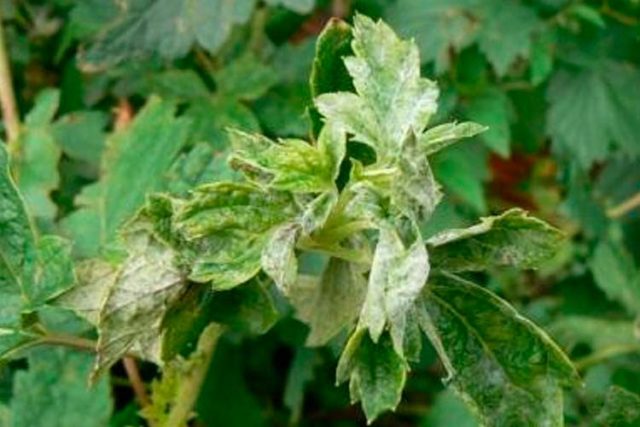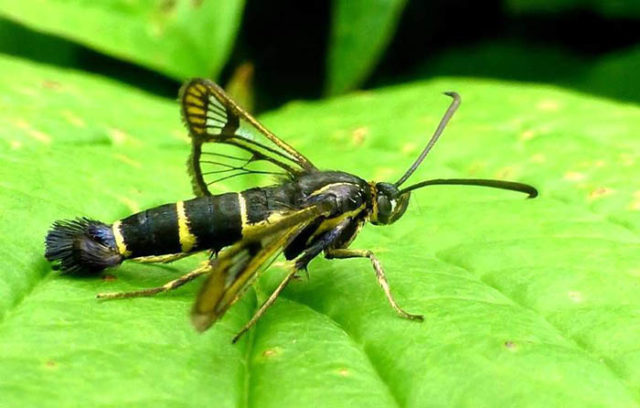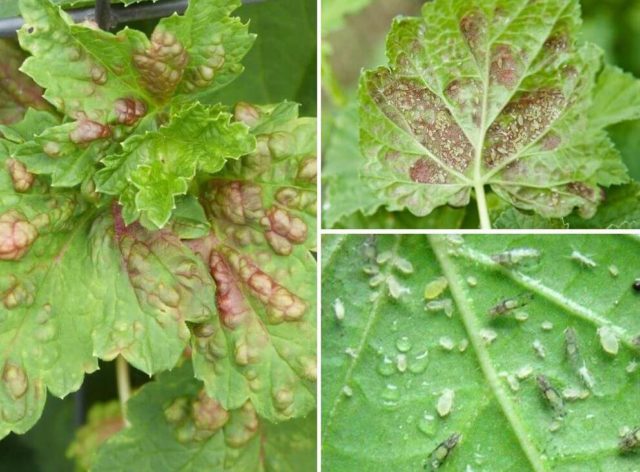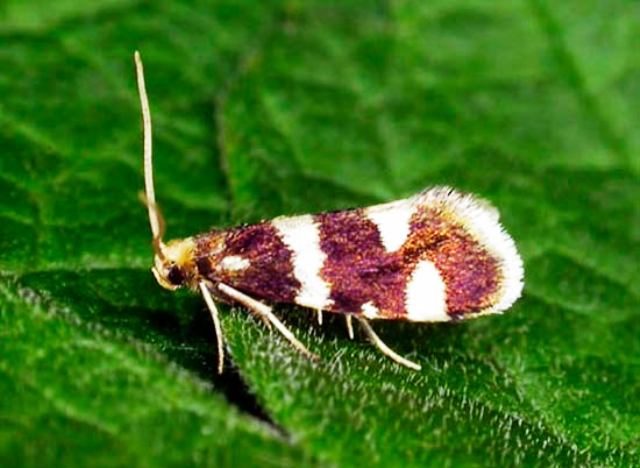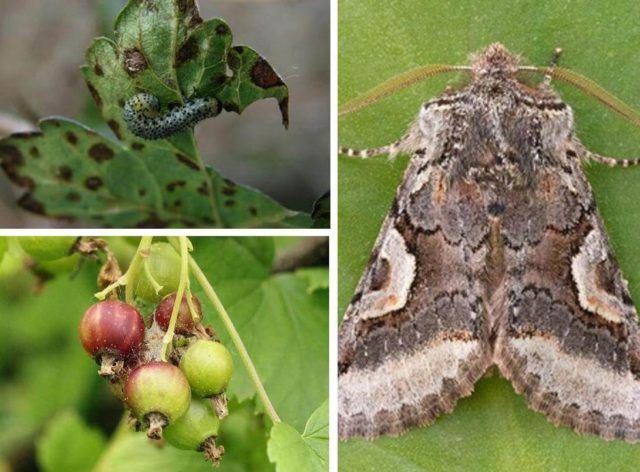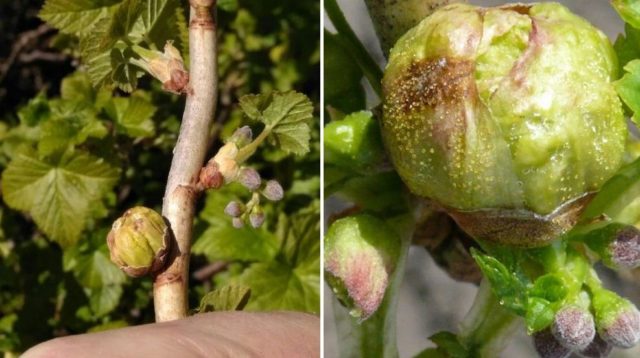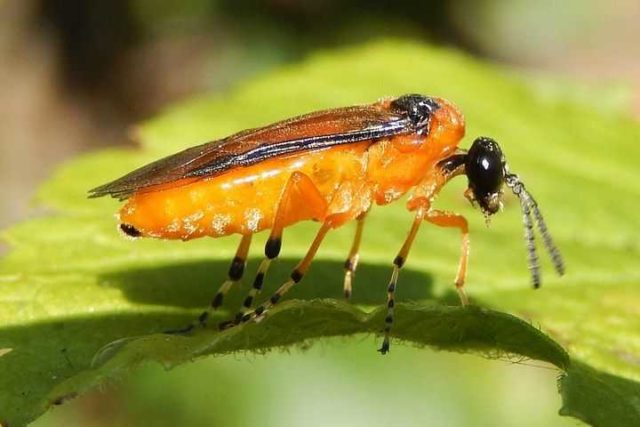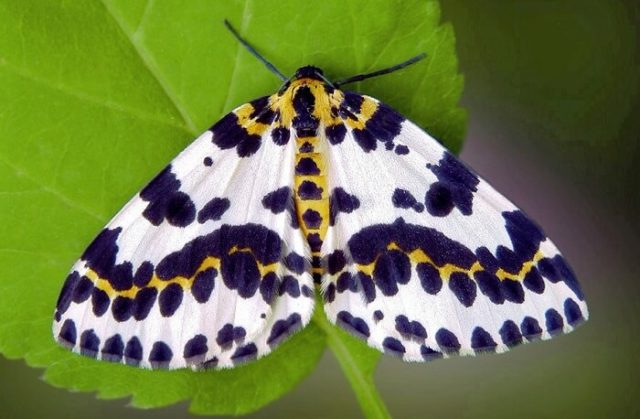Content
Currant Early sweet is one of the most widespread horticultural crops grown in Russia. This is due to the fact that the variety is undemanding to natural and soil conditions, does not need special care. The shrubs of the variety have a beautiful appearance and yield in the form of bright red fruits with an expressive sweet and sour taste.
Description of red currant Early sweet
The Early Red Currant variety was bred by Russian breeders N. Smolyaninova and A. Nitochkina in 1963. In 1974, it was entered in the State Register of Breeding Achievements and is recommended for planting in such regions as Central Black Earth, Volgo-Vyatsky, East Siberian and Central.
The main characteristics of red early sweet currant shrubs are:
- height - up to 1.5 m;
- bushes - compact, semi-spreading, with an average growth rate;
- shoots - no edge, medium thickness;
- buds - solitary, tightly attached to the branches, are of medium size, gray-brown in color and elongated;
- leaves - 3 or 5-lobed, medium-sized, with finely serrated wavy edges;
- seeds are small;
- berries - reach 0.5-0.9 g, have a medium size, rich red color and refreshing sweet and sour taste
The rounded berries remain dry when removed, which facilitates the harvesting process. The brushes can be up to 10 cm in length, taking into account the size of the petiole.
The variety has an early maturity and is self-fertile, pollinated from its own flowers.
Characteristics
The variety of early red sweet currant is represented by low shrubs, with bright red fruits that have a pleasant dessert taste. The prevalence of early sweet currant is associated with the predominant characteristics of the variety, appreciated by gardeners in Russia.
Drought resistance, frost resistance
The variety tolerates low temperatures well and is adapted to sharp prolonged cold snaps down to -30 ° C. Severe frosts can lead to freezing of the root system and a decrease in yield levels.
Red Early sweet currant is drought tolerant. But in the period from the formation of flowers to the ripening of berries, it is necessary to monitor the level of soil moisture. Irregular watering and lack of rainfall negatively affect growth and fruiting rates. Excessive moisture content adversely affects the condition of the root system of shrubs.
Variety yield
Early sweet currants are undemanding to growing conditions, but only with enhanced fertilizing can a good yield be expected. With proper care, the annual collection from one currant bush can reach 8 kg. The same indicator for industrial cultivation is 12 or more tons per hectare. The main share of the harvest is provided by young shoots, no more than a year old, the fruiting of which lasts from 4 to 6 years. On branches older than 6 years, the volume of berry formation is reduced, so they are removed first.
Ripening of berries occurs simultaneously. They stay on the branches for a long time and do not require urgent collection. Even overripe fruits are suitable for food.But an excessive delay in the harvest of the Early Sweet variety leads to baking of the berries in the sun and a decrease in the content of sugar and vitamins in them.
Red currant has good storage and transportability. The main disadvantage of the Rannyaya Sweet variety is the “blowing off” of the berries, the diameter of which decreases from the base of the brush to its apex.
Application area
The variety Early sweet red currant is characterized by a high content of pectins, which help to treat diseases of the gastrointestinal system, remove toxins and toxins from the body, prevent inflammation, slow down the formation and development of neoplasms. Eating red currants helps to flush excess salt from the body by increasing sweating.
Fruits of red early sweet currant tolerate transportation well. Drying and freezing methods are used to store berries of this variety. When frozen, the beneficial properties are retained for 3 months. Longer storage at sub-zero temperatures leads to a decrease in the nutritional value of berries.
Dried berries are considered a semi-finished product. The drying process is carried out in special cabinets. The shelf life of berries harvested in this way is 6 months.
While maintaining a high humidity level, freshly harvested fruits can be stored without any processing in the refrigerator for 20-45 days. To increase the shelf life of fresh berries, it is recommended to pick them slightly unripe.
The fruits harvested on time are used to prepare:
- sauces;
- jam;
- compotes;
- marmalade;
- jams;
- toppings for pies.
Pros and cons of the variety
Currant bushes are compact enough and do not take up much space on the site. The advantages of the Early Sweet variety include the following quality characteristics:
- high productivity;
- dessert taste of fruits;
- undemanding fast collection after ripening;
- winter hardiness.
Another advantage of the red Early Sweet variety is its immunity to pests and diseases during fruit ripening.
The disadvantages include the overgrowth of young shoots and the dependence of the crop on the quality and nutritional value of the soil.
The variety loves sunny, windless places with fertile soil and a low level of groundwater. Does not tolerate shade and heavy clay soils.
Reproduction methods
Red early sweet currant can be propagated in several ways:
- Layers. The soil is loosened near a suitable bush. From the central part of the shrub, grooves are dug under strong shoots 1-2 years old. The branches are bent and laid in grooves, fixing with iron brackets made of wire. The depth of the furrows should be 5-7 cm, and the length should correspond to the size of the branches, which are sprinkled with earth, leaving only the tops above the surface.
As the shoots grow, they are periodically sprinkled with soil. When the sprouts reach a length of 10-12 cm, they are hilled. The soil must be kept moist at all times. Grounded branches are cut from the main bush at the end of September and carefully dug up. The branches are divided into parts, the number of which should correspond to the number of formed and rooted shoots. Poorly developed layers of the Early Sweet variety are grown throughout the year, the rest are planted in the soil. - Lignified cuttings. At the end of August or at the beginning of September, sanitary and rejuvenating pruning of sweet red currant bushes is carried out, during which several healthy shoots are selected, all foliage is removed from them and divided into parts about 20 cm long.The upper cut should be straight and pass over the bud, the lower an oblique cut is made under the kidney. 4 buds should be left on each shoot.
Cuttings are treated with root-forming stimulants and grounded in loose nutrient soil for rooting at an angle of 45 °, leaving 1-2 buds above the surface. A distance of at least 10-15 cm is left between the planted cuttings of early red sweet currants. The beds are regularly watered and periodically mulched with mature compost or peat. If the planting of cuttings was late, they are first covered with spruce branches, and then with a non-woven covering material to protect them from frost. In order for the moisture level to be optimal, the soil is covered with a black film and only then the cuttings are planted, making holes in it. In this way, the earth will be protected from drying out, and the root system will form much faster in the cuttings. - Green cuttings. In June, during the period of the most intense appearance of the shoots, the shoots are cut along with part of the mother branch. Then cuttings are cut in such a way that the length of the shoot is 5-7 cm, and the branches on which it grew is about 4 cm. The lower leaves are removed so that they do not interfere with planting. The finished stalk is planted, placing part of the old branch horizontally and deepening it into the soil by 3-4 cm. The young shoot should be located vertically. The beds are watered, moistening the soil to a depth of 7 cm, and mulch. It is necessary to shade the planting from the hot sun. Cuttings are planted in a permanent place of growth after a year.
- By dividing the bush. This method helps in the case when it is necessary to transplant a bush to a new place. To do this, dug it out, after cutting off all old and damaged branches. The roots are shaken off the ground and cut into pieces with a sharp shovel. A young bush of Early sweet currant is divided in half, and 3-5 parts are obtained from adults.
Each piece is buried in the soil 5-7 cm deeper than the mother bush was previously located. Green seedlings are shortened, leaving 15-20 cm above the soil. Until the delenki take root, they must be watered frequently and abundantly every day.
Planting and leaving
In order for the bushes to grow well and bring a harvest, it is necessary to pay great attention to the choice of the planting site and the preparation of the soil. They begin to process the plot a couple of months before planting the seedlings. It should be well lit, from a lack of sunlight in the berries of the Early Sweet Red Currant variety, the sugar content will decrease, and the overall yield will be low.
Young bushes need to be protected from the wind. To do this, it is recommended to plant them along walls, hedges or fences, retreating 1.2 m from the fences.
In areas prone to flooding, seedlings of early sweet currant do not take root or grow very weak. To avoid stagnation of water, it is recommended to make a drainage cover on the surface of the earth. The soil should be slightly acidic, loamy, sandy loam or medium and slightly podzolized.
The optimal planting time for the Early Sweet red currant is late summer or early autumn. When planted in a later period, the seedlings will not have time to take root and will die. The size of the pit should be up to 0.4 m wide and 0.5 m deep.
The pit is covered with soil mixed with a nutrient mixture prepared from the following components:
- 7-9 kg of manure or compost;
- 200 g superphosphate;
- 35 g of potassium sulfate.
Pour 2 liters of water, mulch with wood shavings or sawdust. The distance between seedlings should be 80 cm and 2.5 m from fruit trees growing in the same area. A distance of at least 1.5 m is maintained between the beds.
Follow-up care
After planting, caring for early sweet red currant seedlings includes several stages:
- Top dressing. Held in the spring.During planting, ready-made mineral mixtures or organic fertilizers are applied in the form of humus or horse manure.
- Watering. For each bush of red currant varieties Early Sweet, 1 bucket of water is consumed in the morning and in the evening 2-3 times a week. During the period of fruiting and the formation of flower buds, when the next year's harvest is formed, currants must be watered frequently and abundantly.
- Pruning. Carried out in April, before bud break, or in autumn, after picking berries, before the first frost. The procedure helps to relieve Early Sweet Red Currant from diseases and to increase the yield and size of berries. During planting, for faster growth, the seedlings of the variety are shortened by 1 / 2-2 / 3 of the length. The branches should be cut at the very surface of the soil, leaving no stumps. Remove old and damaged branches, as well as those that spread along the ground.
To increase the yield and prevent the harmful effects of diseases and insects, it is recommended to thin out the red currant bushes of the Early Sweet variety on a regular basis. Do not prune many young branches at the same time. The old branches are cut in turn every year. With proper pruning, 2-3 branches of all ages should grow on each currant bush - 2 annuals, 2 three-year-olds, 2 ten-year-olds. There are about 15-20 branches in total. - Preparing for winter. Red currant bushes of the Early Sweet variety are sheltered from the cold only in the coldest regions of the country. They are pre-bent to the soil and covered with pine or spruce branches, fixing the shelter with boards or bricks. In regions with a temperate climate, foliage is raked and burned after leaf fall. It can be used as compost by spreading it under a large layer of soil or peat. Near the bushes, the earth is dug to a depth of no more than 5 cm, then a little deeper, so as not to damage the roots of the currant. Mulch the soil with peat or chopped straw. The branches are tied so that they are not damaged by the weight of the snow.
- Rodent protection. Includes digging of near-trunk circles and row spacings in order to destroy mouse holes. The lower part of the trunk is tied with sedge, reed or spruce branches, with needles down. It is not recommended to use currants for these purposes, as they attract mice.
With proper care, every Early Sweet Redcurrant bush will yield a good harvest. So that the branches do not lie on the ground under the weight of the berries, stakes are driven under them and horizontal slats are fixed. Shoots with a large number of fruits are tied up, protecting the branches from possible breaks.
Pests and diseases
Red early sweet currant variety is resistant to most diseases and pests.
In the practice of gardeners, the following serious diseases of the variety are most often encountered:
- American powdery mildew (spheroteka). Fungal pathogens form a powdery spider web, affecting shoots, fruits and leaves of currants. Every 10 days it is recommended to carry out the treatment with ammonium nitrate, mullein infusion and soda ash.
- Anthracnose leads to the formation of brown spots on the leaves, which are subsequently covered with black dots and shiny tubercles containing fungal spores.
- Rusty septoria manifests itself in the appearance of orange swellings on the leaves of the red Early sweet currant. When the disease starts, berries and shoots are exposed to fungal infection.
- White septoria causes the formation of gray cones on the leaves with a brown edging. With further reproduction of pathogenic fungi, the tubercles are covered with black specks of spores.
- Terry (reversion) causes genetic abnormalities in the development and formation of all plant parts of the Early Sweet Currant. Instead of 5-lobed leaves, 3-lobed leaves appear with reduced denticles at the edges.
To combat fungal pathogens, currant processing with special preparations is used.It is also recommended to prune bushes and destroy all fallen leaves in the autumn. This will prevent further spread of the disease.
Insect pests often contribute to the spread of various diseases. The most common are:
- Currant goldfish - intra-stem pest. To eliminate it, all the shoots are cut out and burned in the fall, since they are the wintering place of the larvae.
- Glass-maker - is capable of destroying the entire crop, lives in the middle of the branches and is difficult to destroy.
- Leaf aphid - sucks juice from currant leaves and leads to their strong deformation.
- Kidney currant moth - lays eggs in green berries of the variety, in which the caterpillars then eat up the seeds. The buds are also damaged and die off without blooming.
- Fire - entangles berries with cobwebs and massively destroys them.
- Spider mite lays thousands of eggs on young foliage. After 7 days, larvae appear from them, which entangle a leaf with cobwebs and feed on its juices. The leaf blades are covered with microscopic dots, later completely covered with a marble mesh.
- Kidney mite - affects only the buds of early red sweet currant. Adult female ticks hibernate in large buds, which become leathery, lighter and as if swollen.
- Pale-footed sawfly - females lay eggs in a chain on the underside of the leaves. After 6 days, the larvae that appear eat up all the foliage, leaving only veins.
- Gooseberry moth. Gluttonous caterpillars eat all currant foliage along with veins.
Getting rid of the red currant variety Early Sweet from most pests is carried out by agrotechnical methods - digging the site, destroying damaged plants and their parts, as well as processing currant bushes with drugs such as Karbofos and Fitoferm.
Conclusion
Early sweet currant is widespread and loved by gardeners for its rich taste, abundant yield and unpretentiousness. The distinctive advantages of the variety are the early ripening of the berries and the fruiting of the bushes for many years. Growing early sweet currants is available even to an inexperienced gardener.

